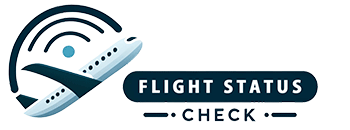In today’s fast-paced world, travel has become an integral part of our lives. Whether it’s for business or pleasure, people are constantly on the move, jetting off to different parts of the world. With the rise of technology, keeping track of flights has become easier than ever before. One of the most popular tools that people use to monitor flight status is a flight tracker.
A flight tracker is a tool that allows you to monitor the real-time status of flights. Whether it’s a commercial airline or a private jet, you can easily track its whereabouts, departure and arrival times, and even its altitude. This technology has revolutionized the way we travel, providing us with up-to-date information at our fingertips.
The history of flight tracking dates back to the early 20th century when radio communication was used to monitor the movement of aircraft. Fast forward to today, and we have access to a plethora of flight tracking apps and websites that make it incredibly easy to stay informed about flight schedules and delays.
One of the most fascinating aspects of flight tracking is the technology behind it. Flight trackers use a combination of radar data, GPS signals, and ADS-B (Automatic Dependent Surveillance-Broadcast) to provide accurate and real-time information about the location and status of an aircraft. This data is then transmitted to the flight tracking apps and websites, allowing users to monitor multiple flights simultaneously.
One of the key benefits of using a flight tracker is the ability to plan and manage your travel more effectively. Whether you’re picking up a friend from the airport or planning your own journey, having access to real-time flight information is invaluable. You can track the progress of your flight, get updates on any delays or cancellations, and even receive alerts when your flight is boarding or has landed.
Moreover, for aviation enthusiasts, flight tracking offers an exciting opportunity to observe the movement of planes in the sky. With just a few clicks, you can identify aircraft flying overhead, track their flight paths, and even access information about the type of aircraft and airline. It’s a great way to indulge in your passion for aviation without leaving the comfort of your home.
In addition to tracking individual flights, flight trackers also provide a wealth of data about airports and air traffic. You can access information about the number of flights arriving and departing from a particular airport, view the current weather conditions, and even check the status of airport facilities such as runways and terminals. This can be particularly useful for frequent flyers or those who are planning a trip and want to stay informed about the conditions at their destination airport.
Another interesting aspect of flight tracking is the opportunity to explore historical data. Many flight tracking apps and websites offer the option to view past flight routes, flight paths, and even statistical information about airlines and aircraft. This can be particularly useful for researchers, air traffic analysts, and aviation enthusiasts who are interested in studying patterns and trends in air travel.
As technology continues to advance, so does the functionality of flight tracking tools. With the advent of augmented reality and virtual reality, there is potential for even more immersive and interactive flight tracking experiences. Imagine being able to virtually “step inside” a cockpit and see the world from the pilot’s perspective, or being able to track a flight in real-time through a pair of AR glasses. The possibilities are endless and are sure to captivate aviation enthusiasts and casual users alike.
It’s important to note that while flight tracking is incredibly useful and convenient, it also raises concerns about privacy and security. The use of ADS-B and other tracking technologies means that virtually anyone can access information about the location and movement of aircraft. This has led to discussions about the need for regulations and standards to ensure that flight tracking data is used responsibly and ethically.
In conclusion, flight tracking is a fascinating and essential tool for anyone who travels or has an interest in aviation. From providing real-time flight information to offering insights into air traffic and historical data, flight tracking has numerous practical and recreational applications. As technology continues to evolve, we can expect even more innovative features and functionalities to enhance the flight tracking experience. Whether you’re a frequent flyer, aviation enthusiast, or simply someone who wants to stay informed about the movement of aircraft, flight tracking is a valuable resource that continues to shape the way we experience air travel.

Leave a Reply